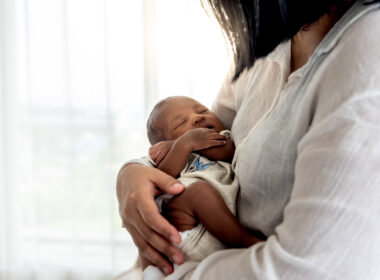For most people in the United States, cancer is a common experience, either through personal diagnosis or that of a loved one. As of January 2019, approximately 1 in 20 Americans was a cancer survivor. I have written before about other cancers specific to women, such as endometrial and breast cancers, and natural ways to prevent them. Here, I want to focus on a rare but very serious type of reproductive cancer: vaginal cancer. Every woman deserves to know whether she is personally at risk for developing vaginal cancer, its symptoms and survival rate, and how to treat it.
What is vaginal cancer?
Vaginal cancer, loosely defined, occurs when malignant cells form in the vagina. Together with vulvar cancer–which is cancer of the external, visible parts of a woman’s genital organs–vaginal cancer accounts for less than seven percent of all reproductive cancers diagnosed in women in the United States. For reference, 100,000 women total in the U.S. are diagnosed with reproductive cancer—cervical, uterine/endometrial, ovarian, vaginal or vulvar cancer—each year.
Vaginal cancer is typically secondary to another form of cancer. This means it develops from another cancer in a woman’s body. Usually that other cancer is also a reproductive cancer, such as cervical or uterine cancer. In rare cases, vaginal cancer is the primary cancer. This means a woman will only develop vaginal cancer, without first developing another kind.
The most frequent types of vaginal cancer
While there can be many variations of vaginal cancer, two types occur most frequently. Squamous cell carcinoma forms in layers of cells lining the vagina, similar to skin cancer. According to the National Cancer Institute, “squamous cell vaginal cancer spreads slowly and usually stays near the vagina, but may spread to the lungs, liver, or bone. This is the most common type of vaginal cancer.”
Adenocarcinoma is the second most common type of vaginal cancer. Adenocarcinoma is a glandular cancer that is more likely to spread to the lymph nodes, and from there to the rest of the body.
Vaginal cancer symptoms and diagnosis
The most common symptoms of vaginal cancer are: pain during sex, bleeding that is not due to menstruation, pain during urination, pain in the pelvic area, constipation, or even a mass or lump in the vagina that can be felt. However, this symptom list is not entirely unique. Other reproductive conditions share some of these same symptoms. That’s why it’s important to see your healthcare provider if you start to experience one or more of them.
Your healthcare provider may order the following exams or tests to determine what’s causing your symptoms and potentially diagnose vaginal cancer:
- Pelvic exam: The doctor will use both a speculum and his or her hands to look and feel for any abnormalities of the cervix, vagina, uterus, fallopian tubes, ovaries, and rectum.
- Colposcopy: Examination of the cervix and vagina under a lighted microscope (colposcope), followed by biopsies of abnormal tissue.
- Pap smear: Cells of the vagina and cervix are collected so as to determine if they are cancerous, can lead to cancer, or have infections or inflammation.
- Human papillomavirus (HPV) test: Similar to (or as a result of) a pap smear, this test examines the DNA and RNA of cells collected from the vagina and cervix to see if a certain strain of HPV linked to cervical cancer is causing infection.
- CT/CAT scan or MRI: A computed tomography (CT) scan gives a series of images of bones, fat, muscles, organs, and tissues which are much more detailed than a simple X-ray, and hence can be used to identify the presence of cancer cells. Magnetic resonance imaging (MRI) uses magnets and radio frequencies to give similarly detailed images.
Survival rates
Cancer survival rates are estimates of how likely a particular type of cancer is to kill a person within a certain time frame, usually within five years. These estimates are influenced by things like age, other medical history, how well the cancer responds to treatment, etc. According to Medical News Today, how much the cancer has spread drives survival rates.
If located only in the vagina, the survival rate for vaginal cancer is 69%. This means that of 100 women with vaginal cancer, 69 will still be alive five years after diagnosis. (Note that this excludes deaths from other causes unrelated to vaginal cancer.) If the cancer has spread to surrounding lymph nodes or body structures, the 5-year survival rate decreases to 57%, and it decreases dramatically if the cancer has spread to other parts of the body, such as the lungs or liver—down to 26%.
Who is at risk of developing vaginal cancer?
Risk factors for vaginal cancer are many. Smoking is a risk factor, as with many other cancers. Adenocarcinoma, which is the more rare type of vaginal cancer occurring in the glands of the vagina, has been linked in certain cases to exposure to Diethylstilbestrol (DES).
Diethylstilbestrol (DES)
DES is a synthetic form of estrogen that was given to some pregnant women between 1940 and 1971 because it was thought at the time to prevent miscarriage. Those women’s unborn daughters who were exposed to DES were found in subsequent years to develop clear cell adenocarcinoma of the vagina. Worse, DES exposure had wider-ranging generational effects than at first thought. Even the granddaughters of women prescribed DES showed an increased chance of developing not only vaginal cancer, but also cervical and breast cancer.
Age
Another large risk factor in developing vaginal cancer is age. Almost half of all cases occur in women over seventy years old, and most often, vaginal cancer is found in menopausal women.
Other reproductive issues or STIs
A history of other reproductive or sexual illnesses–such as cervical cancer, HIV or HPV, and vaginal adenosis (which is commonly associated with DES exposure)–also increases vaginal cancer risk.
Interestingly enough, because of the association between HPV infection and vaginal cancer, the dramatic rise of HPV infections in young women has led to an increase of primary vaginal cancer cases in young women [1]. Remember that primary vaginal cancer, or cancer found only in the vagina, is typically less likely than secondary vaginal cancer. This increase in primary vaginal cancer diagnoses has occurred especially in countries with a high rate of HIV.
Vaginal cancer treatment
Like other cancers, vaginal cancer has three main treatment options: surgery, radiation therapy, and chemotherapy.
Surgery
Surgery for vaginal cancer could involve the removal of a small tumor and some healthy tissue surrounding it (wide local excision), removal of all or part of the vagina itself (vaginectomy), or total hysterectomy, in which the uterus and cervix are removed.
Radiation therapy
Radiation therapy uses X-rays with high energy, either externally or internally, to kill cancer cells.
Chemotherapy
Chemotherapy is the use of drugs to kill cancer cells or stop them by dividing. Typically, this is given orally or by injection, but for vaginal cancer, and particularly squamous carcinoma, topical therapy in the form of cream or lotion may be applied.
How can you prevent vaginal cancer?
Prevention of vaginal cancer looks the same as prevention of any other cancer: avoid toxins, eat healthy, exercise, and generally live a healthy lifestyle. However, because of the connection between HIV/HPV infections and vaginal cancer, being vaccinated against HPV is increasingly encouraged as a preventative measure against vaginal and/or cervical cancer [1].
Should doctors be “prescribing” monogamy to prevent vaginal cancer?
But there is another preventative measure against vaginal cancer that will not usually be mentioned on most health information websites. According to UNAIDS:
“In 2021, key populations (sex workers and their clients, gay men and other men who have sex with men, people who inject drugs, transgender people) and their sexual partners accounted for 70% of HIV infections globally.”
Most people would agree that drug use should be avoided and thus, HIV (and possible vaginal infection) would also be avoided. It might not be as obvious at first that keeping sex within the bonds of marriage between one man and one woman could also have global impact.
And yet, the numbers are there: setting aside the men, of course (who are not at risk for vaginal cancer), HIV infections, and subsequent vaginal cancer risk, could be drastically reduced if emphasis was given to healthy monogamous sexual relationships, rather than just getting a vaccine and continuing to make poor lifestyle choices. One could liken it to a diabetic who takes a shot of insulin only to eat a bag of candy at the next meal. The injected hormone might do the trick, but the diabetic is not healthier, only less ill. Similarly, an HPV vaccine can, technically, prevent vaginal cancer because it can prevent HPV. But is a woman living out her full potential for good health simply because she is vaccinated, if she continues to engage in risky sexual practices?
Expanding the conversation on vaginal cancer prevention
Understandably, most cancer doctors (and cancer patients) are largely focused on treatment of the sickness that is wreaking immediate havoc on their patients’ bodies–the scope of their vision is more narrow. But perhaps this is an area where our medical community at large has failed us. We want to kick cancer to the curb, but are we doing so with invasive treatments or innovative lifestyle changes? Is our vision of health one of constant alarmism–take the Pill so you don’t get pregnant, get vaccinated so you don’t get sick, cover up with a condom so you don’t get the disease, wear gloves so you don’t get germs–or is it one of true human flourishing? If we could step back for a minute and consider, we might discover a different and better answer than what we first set out to find–and keep our bodies (including for those of us females, our vaginas!) and ourselves healthier in the process.
References:
[1] Adams, Tracey S et al. “Cancer of the vagina: 2021 update.” International journal of gynaecology and obstetrics: the official organ of the International Federation of Gynaecology and Obstetrics vol. 155 Suppl 1,Suppl 1 (2021): 19-27. doi:10.1002/ijgo.13867Additional Reading:
The surprising health benefits of pregnancy
Study links hormonal birth control to increased risk of breast cancer
How birth control, pregnancy, and abortion each impact a woman’s breast cancer risk











